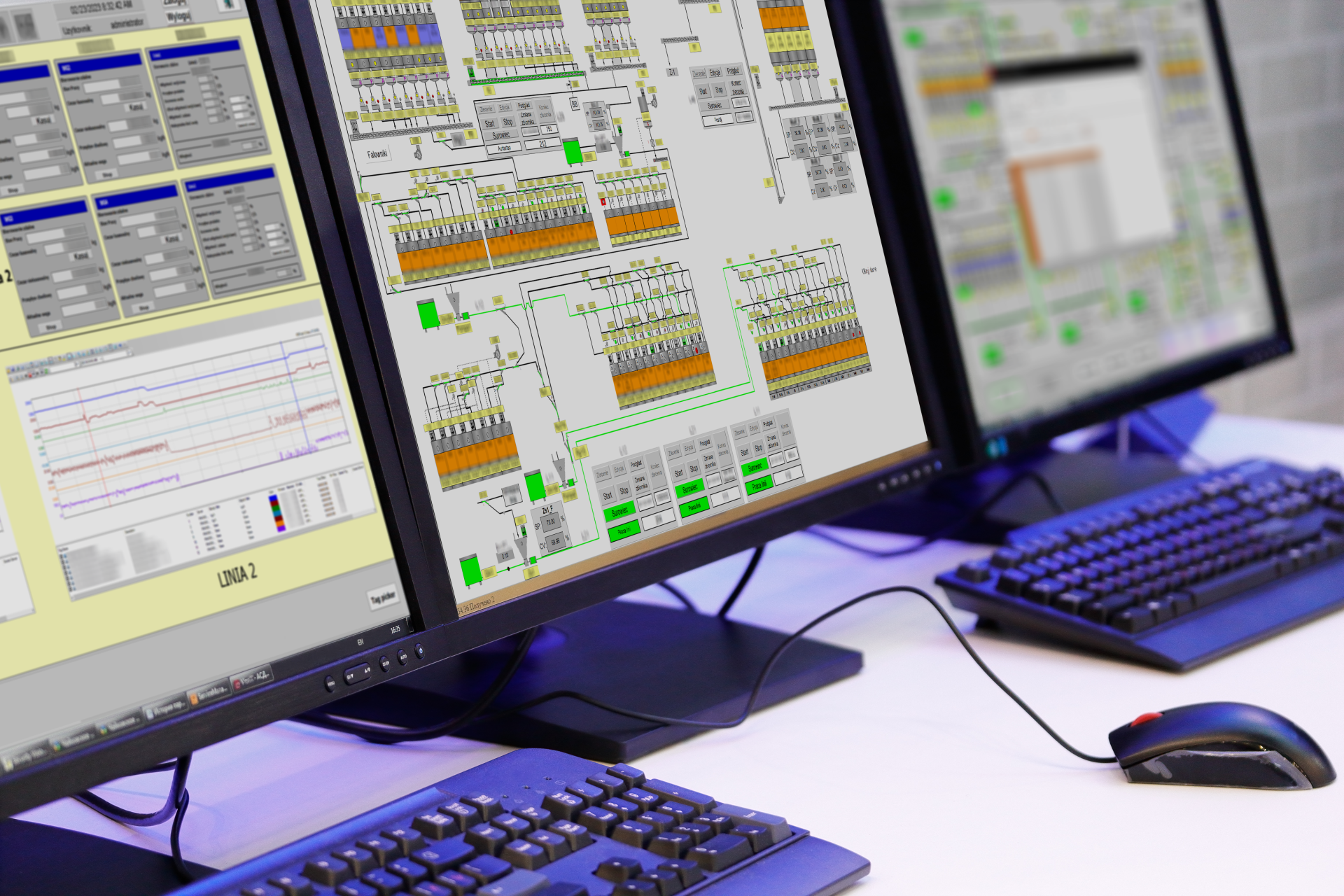SCADA systems are a crucial part of overseeing a manufacturing plant. Over the years, these systems have evolved significantly, both in terms of technology and design. In this article, we will discuss how SCADA system design trends have changed, how data access is evolving, and how these changes impact process efficiency and response time.
What are SCADA Systems?
SCADA systems are designed to enable supervision of the entire production process within a facility. They serve as a bridge between the automation layer, machinery operation, and the production department. They allow for remote device control and complete control over production lines, including order and recipe configuration. Another important aspect is their integration with higher-level systems such as MES and ERP, which enables the free flow of information within the company, from planners through the control departments to the operators.
Evolution of communication in SCADA Systems
The evolution of SCADA systems has brought significant changes in how they communicate with controllers. In the past, early solutions provided by controller manufacturers supported only specific protocols for their devices. These monolithic systems did not allow communication with other controllers. However, as technology progressed, distributed solutions emerged, allowing communication with controllers from various manufacturers.
Today, third-generation systems, such as AVEVA software, offer support for multiple communication protocols. This makes it possible to manage the entire spectrum of controllers from a single SCADA interface.
Development of OPC technology
Concurrently with the advancement of SCADA systems, OPC technology has also dynamically evolved. It serves as a crucial link between the automation layer and SCADA systems. Now, regardless of the manufacturer of controllers, it is possible to visualize data in the SCADA system through simple addressing mechanisms. The OPC system acts as a data concentrator, gathering information from various production lines.
A new approach to SCADA System design
Over the years, the approach to designing visual interfaces in SCADA systems has undergone significant changes. Initially, visualizations were characterized by an excess of colors and inconsistent fonts, making it challenging for operators to focus on critical data.
Today, grayscale tones prevail, with bright colors like yellow are used to highlight elements that require user attention. Visualizations focus on presenting essential parameters in accordance with standards that support process efficiency. Bars and charts displaying minimum and maximum values are becoming more popular, enabling operators to make faster decisions.
The new approach also involves nested views, where the main layout of the production facility is visibly upfront, and detailed information can be accessed by clicking on specific sections.
Example of effective use of SCADA System
As an example of effective SCADA system utilization, we can mention a client of the explitia company. They have implemented a visualization system that depicts the entire layout of the manufacturing plant. Operators can track product flow, identify identification numbers, and obtain detailed information about each product. Moreover, the system allows focusing on specific areas, which accelerates response time.
Summary
The evolution of SCADA systems has brought significant technological and design changes. The new approach to visualization design, the development of OPC technology, and enhanced communication capabilities make SCADA systems increasingly efficient and user-friendly. They provide precise control over manufacturing processes and faster response to changes.
If you find the development of systems for production process control interesting, we encourage you to contact us to learn more about process visualization possibilities.
Contact us
Do you want to move your production plant to level 4.0? Are you interested in modern solutions for industry in the field of automation and digitisation? Be sure to let us know!


